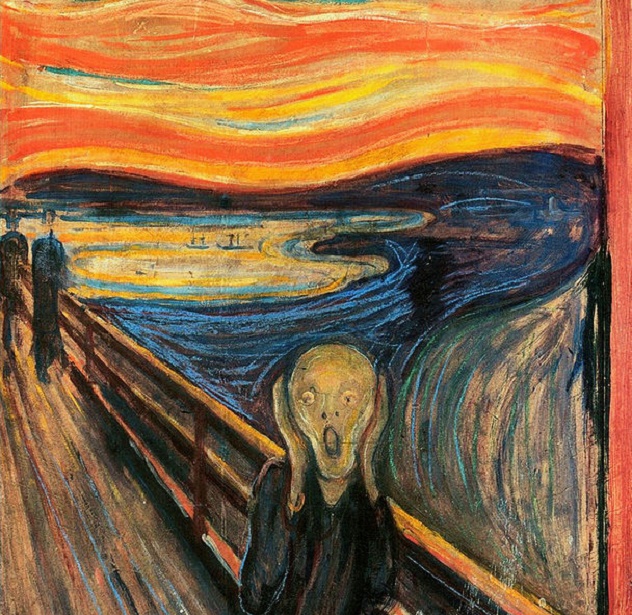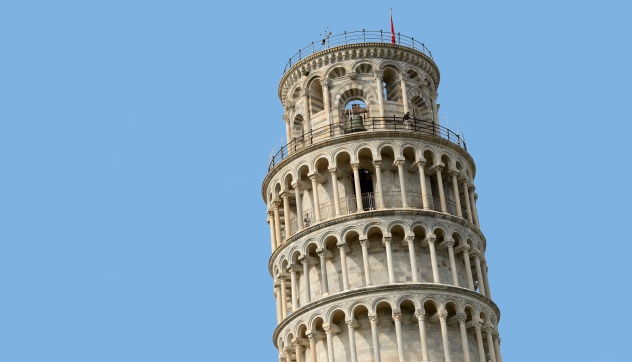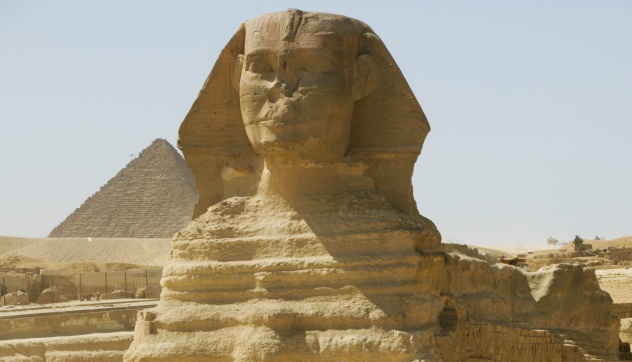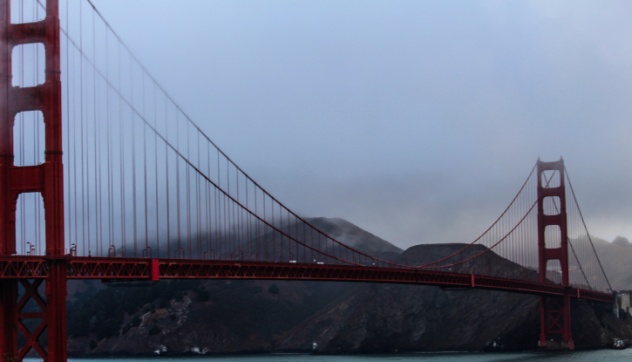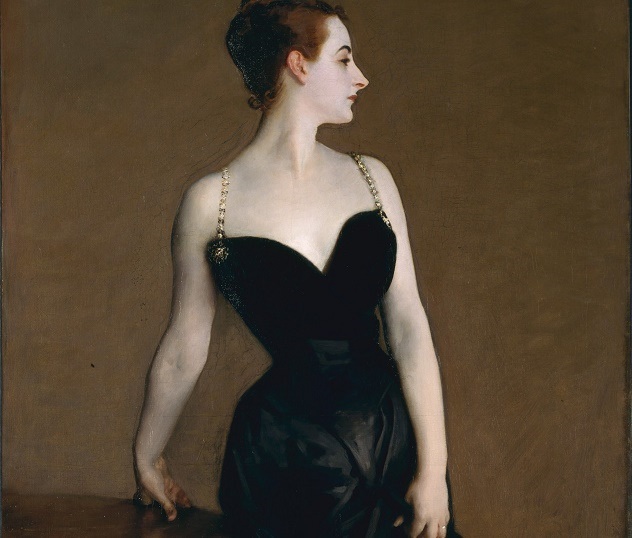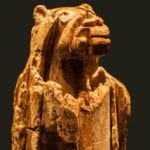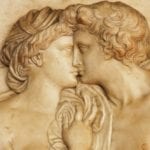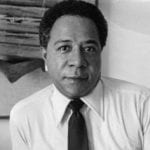10 The Eiffel Tower’s Secret Room
The Eiffel Tower has a secret apartment hidden within its highest level. The apartment is owned by Gustave Eiffel—the engineer who designed the tower. In 1890, the year after the Eiffel Tower was opened, French writer Henri Girard, stated that Gustave Eiffel was an “object of general envy” among the citizens of Paris. This envy, according to Girard, was inspired not by the fame that Gustave gained as the creator of the tower, or the fortune the tower generated, but from the apartment he owned at the tower’s top. This apartment, which only Eiffel had access to, played host to many important visitors; prominent among them was Thomas Edison. Eiffel reportedly received several substantial offers for a single night in the apartment. The apartment, which had remained closed for several years, was recently opened to the public. Today, it contains mannequins of Eiffel and Edison. The lifelike wax models depicted the scene where Eiffel and his daughter Claire welcomed Edison. Also engraved on the Eiffel Tower are the names of the 72 scientists and engineers that designed it.
9 The Inspiration Behind The Scream
Edvard Munch’s The Scream is one of the most iconic paintings of the 20th century—so iconic it was elaborately stolen more than once. According to Munch, The Scream was inspired the day he was walking with his friends and saw that “the sky turned as red as blood,” before feeling incredibly tired and hearing an “enormous infinite scream of nature.” For years Munch’s inspiration was thought to be imagined until it was recently discovered that the sky that day probably actually was red that day as a result of the 1883 eruption of Krakatoa in Indonesia. The volcano’s impact was felt as far as New York where the sky was reported to be “crimsoned.” This same impact was felt in Munch’s town two days later with the town newspaper stating that “People believed it was a fire: but it was actually a red refraction in the hazy atmosphere after sunset.” While the terrifying scream in Munch’s painting was imagined, the sky was probably not.
8 The Leaning Tower Of Pisa’s Unknown Architect
Also known as Torre Pendente di Pisa, the Leaning Tower of Pisa doubles as both a monument and a mystery. While the reason for its rather distinctive leaning is well-known (it has a weak foundation), no one knows who designed it. The Tower was originally meant to be a stand-alone bell tower (or campanile) for the city of Pisa’s cathedral. Such towers were common in 10th-century Italy as they were believed to symbolize how powerful and wealthy the town was. The leaning tower of Pisa, however, was built to attract people to the cathedral in Pisa. The major reason why no one knows who designed the tower is because the tower took almost 200 years to complete. Historians used to think the tower was designed by Bonanno Pisano, but this is disputed. An architect named Diotisalvi is seen as the more likely person to have designed the tower because he designed the city’s baptistery and the San Nicola Bell Tower.
7 The Chain At The Foot Of The Statue Of Liberty
In 2011, when asked what the Statue of Liberty symbolized, former Governor of Alaska Sarah Palin said, “It is, of course, the symbol for Americans to be reminded of other countries because this was gifted us, of course, by the French—other countries warning us to never make the mistakes that some of them had made.” Unfortunately, Sarah Palin was totally wrong, as she stated the exact opposite of what Lady Liberty represents. And just like Palin, many people do not know of the statue’s connection to slavery. Edouard de Laboulaye, a famous French politician and abolitionist, is the man behind the Statue of Liberty. He was a firm backer of President Lincoln, who was fighting for the abolition of slavery. The statue was not a gift to warn the United States as Palin had stated. Instead, it was a gift to honor and celebrate freedom, democracy, and the end of all forms of servitude. That is why Lady Liberty has a broken chain at her foot. The chain is usually invisible to tourists because it is beneath her robe by the side of her left foot and can only be seen from the top.
6 The Sphinx’s Missing Beard
We’ve already talked about how we almost lost the Sphinx and the mystery behind its missing nose. However, only a few people know the story behind its beard. The Sphinx was not originally constructed with a beard. Instead, it was attached long after it was constructed. It was added probably to relate the Sphinx with Horemakhet—one of the Egyptian gods. It may also have been intended for the Sphinx take after the Egyptian pharaohs, who often wore artificial beards as a symbol of authority, and to associate them with the god Osiris. One-thirtieth of the beard is currently in the British museum. It was presented to the museum by the Italian Egyptologist Giovanni Caviglia, who excavated parts of the Sphinx in 1817, when it was almost completely covered in sand. Several other parts of the Sphinx’s beard were also found between 1925 and 1926 when sand was excavated from the Sphinx again.
5 Da Vinci’s Hidden Music
In 2007, Giovanni Maria Pala, an Italian computer technician and musician, stated that he had uncovered musical notes in Da Vinci’s famous painting The Last Supper. According to Pala, if one draws the five lines of the musical staff across the painting; the hands of Jesus Christ, the hands of his apostles, and the loaves of bread on the table would depict a musical note which would make sense when read from right to left. Da Vinci was known to be a music enthusiast who incorporated musical riddles in his writings which must be read from right to left. Alessandro Vezzosi, the director of a dedicated Da Vinci museum in Tuscany believed Pala’s proposition is “plausible.” Vezzosi also stated that Da Vinci played the lyre and sketched several musical instruments. “There’s always a risk of seeing something that is not there, but it’s certain that the spaces (in the painting) are divided harmonically,” he said. “Where you have harmonic proportions, you can find music.”
4 The Golden Gate Bridge Color Crisis
The Golden Gate Bridge holds the record as the most photographed bridge in the world. Interestingly, the US Navy never wanted the bridge to be built because they feared that if the bridge was bombed and destroyed, it would trap their ships docked in the San Francisco Bay. The Navy later gave their consent to the construction of the bridge. However, they did not like the color that the bridge was going to be painted. They, along with the Army, wanted the bridge to be painted in black and yellow stripes so that it would be visible in the fog. However, the bridge’s architect, Irving Morrow, had a different plan. When the steel to be used for the bridge arrived in San Francisco, it was already painted with a base coat to prepare the steel for more paint. Back then, most bridges were coated in grey, brown, and black, but Morrow had it painted in “international orange,” similar to the color of the base coat. Not only is international orange visible in fogs, it also complements and contrasts with the blues of the sky and the bay.
3 The Madame X Scandal
The Portrait of Madame X is a prominent painting by a young American immigrant and celebrity named John Singer Sargent of Virginie Avegno Gautreau. Sargent had hoped that Madame X would make his reputation. The portrait did make him famous, or infamous, because of its supposed indecency. After it was exhibited at the Salon, the portrait was highly criticized and mocked. The major reason behind the criticism was the right strap in the portrait. The strap in the early portrait can be seen falling off her right shoulder, revealing a little more of the model’s skin. The scandal that followed was so intense that Sargent had to move to Britain. The Gautreau family was ashamed of the scandal and pleaded with Sargent to withdraw the painting. Sargent, in an effort to pacify the critics and public, repainted the strap into what we see in the portrait today.
2 Mount Rushmore Time Capsule
While it is well-known that Mount Rushmore is incomplete, few people know about its time capsule. While building Rushmore, its chief architect Gutzon Borglum wanted to create a large hall which would serve as a grand room where all of the important documents in American history would be kept. He thought adding important documents and charters like the Declaration of Independence and the Constitution would make the already outstanding monument more significant. Unfortunately, he was hindered by a lack of money and space until he died in 1941, leaving the work incomplete. In 1998, the Constitution, 16 porcelain enamel panels containing the text from the Declaration of Independence and the Bill of Rights along with a memoir of Borglum, and the stories about the presidents sculpted into the mountain were placed in a titanium vault and sealed inside the unfinished hall. These documents are to be left sealed and untouched for thousands of years.
1 Michelangelo’s Last Judgment
Not long before he died, Pope Clement VII contracted Michelangelo to create a painting of the Last Judgment on the walls of the Sistine Chapel. The drawing is supposed to represent the last day, also called the “Judgment Day,” when Jesus Christ would return to the world. The artwork, however, generated some controversy after Michelangelo drew several of the characters naked, showing their private parts, including that of Jesus Christ and his mother Mary. This didn’t go down well with a cardinal who began the “Fig Leaf Campaign” with the aim of having the drawing totally removed or heavily censored. The Pope’s Master of Ceremony, Biagio da Cesena, also joined in, calling for the censoring or total removal of the drawing, which according to him, was better suited to be displayed in a public bath or bar instead of a church. This angered Michelangelo who then used Cesena’s face for the face of Minos—the god of the underworld. He also added the ears of a donkey to it to denote Cesena’s “foolishness.” The nude images remained in the church till A.D. 1564 when the Council of Trent decided that they should be covered by braghes (literally meaning “pants”), such as fig leaves or draped fabrics. During restoration works in 1993, about half of the braghes put over the characters’ private parts were removed and it was seen that Michelangelo had actually painted Minos with a snake coiled round his waist biting him in the groin. Elizabeth is an aspiring writer and blogger.

